There are more than 6,000 unique species of lizards on Earth, and they are an incredibly diverse bunch of reptiles! From massive monitor lizards to tiny geckos, let’s take a look at some of the most fascinating lizard species you definitely need to know about. We’ll also briefly touch on how lizards are taxonomically categorized and what lizard species are in each main group!
The Five Classes of Lizards
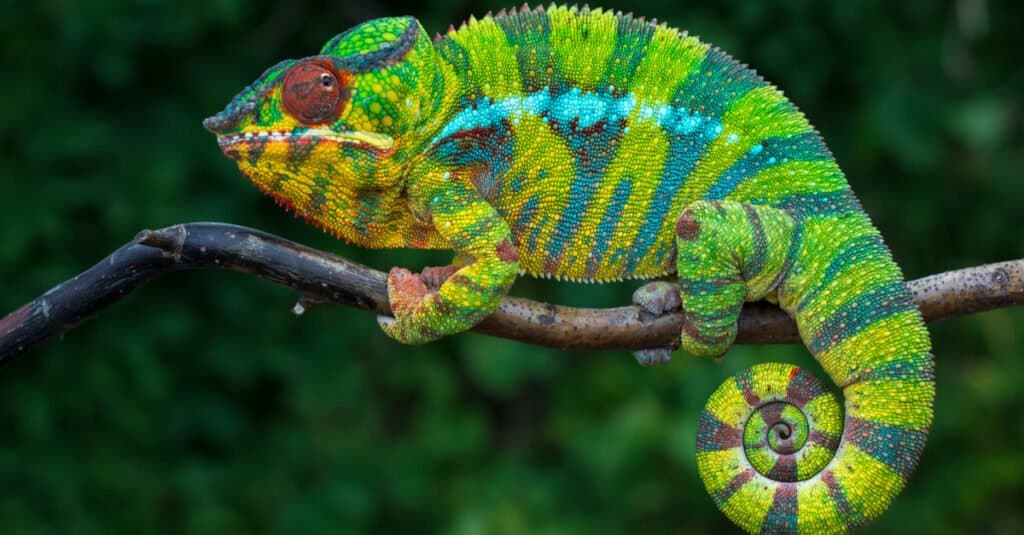
All
lizards
, including this panther chameleon, fall under one of five groups within the Lacertilia suborder. Chameleons, in particular, are classed within the Iguania group.
©Jan Bures/Shutterstock.com
Before we get into specific species, it is helpful to understand how we classify lizards and the general types of lizards included within each.
Within the Squamata order of reptiles is the Lacertilia suborder, which contains all known lizard species. We can further break this suborder down into five main groups, or infraorders. These five infraorders loosely categorize all types of lizards based on traits like their body plans, how they’ve evolved over time, and other physical characteristics they may share.
The main five groups of lizards are:
- Anguimorpha: A rather eclectic group that contains glass lizards, beaded lizards, crocodile lizards, alligator lizards, legless lizards, slow worms, knob-scaled lizards, galliwasps, and, oddly enough, varanids, better known as monitor lizards.
- Gekkota: This group contains every single species of gecko, including those with eyelids. Most geckos are small in size, ranging from a mere half-inch long to around 20 inches. More than 60% of all species have sticky pads on their feet, making them agile climbers.
- Iguania: Another sort of “catch-all” group that contains iguanas, chameleons, chuckwallas, helmet lizards, agamids or “dragon lizards,” collared lizards, and anoles.
- Lacertoidea: Generally referred to as “true” lizards for how common most species are throughout Europe. However, with more species being discovered, they have been found to have a surprisingly wide distribution across Europe, Africa, Asia, and the Americas. This group contains lacertas and wall lizards, tegus, whiptails, spectacled lizards, and worm lizards.
- Scincomorpha: This group contains all species of skinks as well as girdled lizards, plated lizards, and night lizards.
Of course, we could break these groups down even further, but that would make things a bit tedious and confusing for the purposes of an overview article like this. Now, without further ado, let’s take a look at a few unique species within each group!
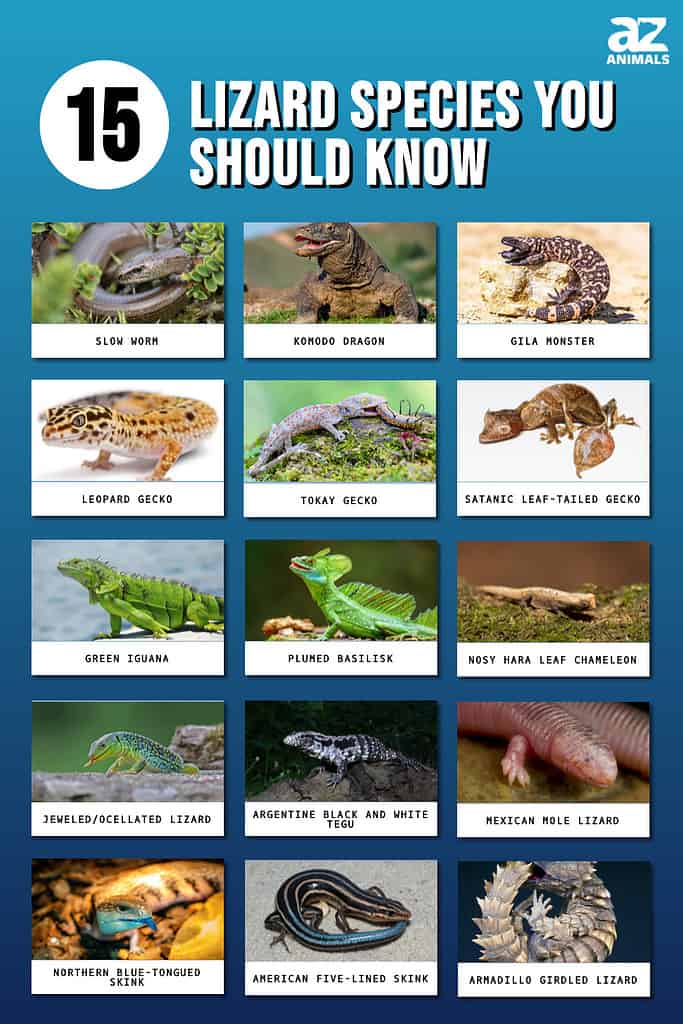
Anguimorphs: Legless Lizards, Varanids, and More
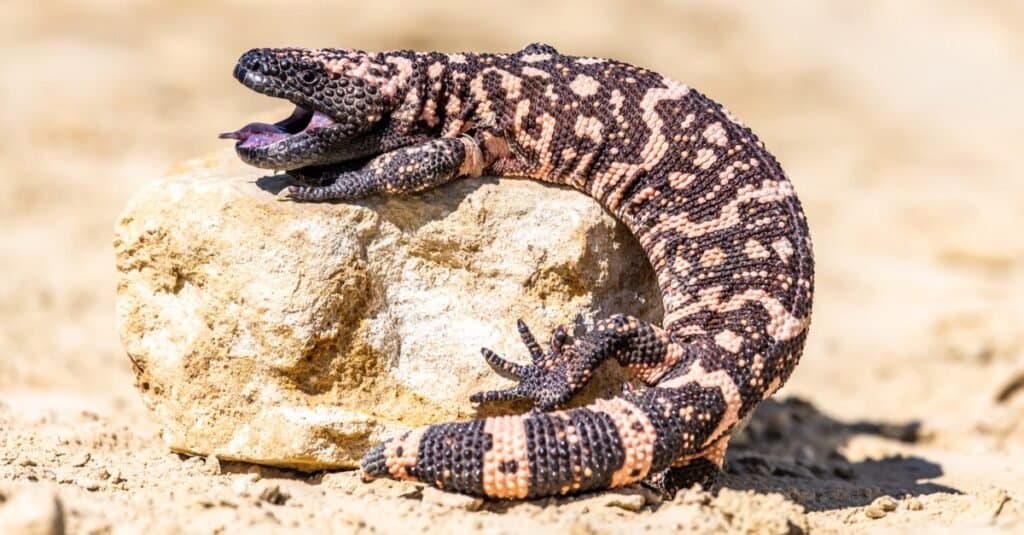
Although
Gila monsters
are technically venomous, they are too slow and non-aggressive to present a threat to humans.
©Vaclav Sebek/Shutterstock.com
The Anguimorphs are a bizarre bunch of reptiles, as they range from the unassuming, legless slow worms to massive, fearsome monitor lizards! Strangely, many of the lizards within Anguimorpha don’t even look like lizards at all. Species like glass lizards more closely resemble snakes at a glance, while many monitor lizards look like dinosaurs straight out of Jurassic Park!
Here are a few species you should know about within the Anguimorpha infraorder:
- Slow worm (Anguis fragilis). There are actually five separate species of slow worms, though they are all morphologically similar. Legless and highly reclusive with poor eyesight, their name suits them quite well.
- Komodo dragon (Varanus komodoensis). As the largest lizard in the world, the Komodo dragon is a terrifying yet majestic beast! Native to a few small islands in Indonesia, these lizards weigh well over 100 pounds and commonly reach lengths of 8+ feet long.
- Gila monster (Heloderma suspectum). Gila monsters are unique for their venomous bite and raised, circular scales that are orange and brown in color. They are native to the southwestern United States and northern Mexico. Thankfully, they aren’t much of a threat to humans thanks to their shy temperament and slow-moving nature.
Gekkota: Geckos, Geckos, and More Geckos!
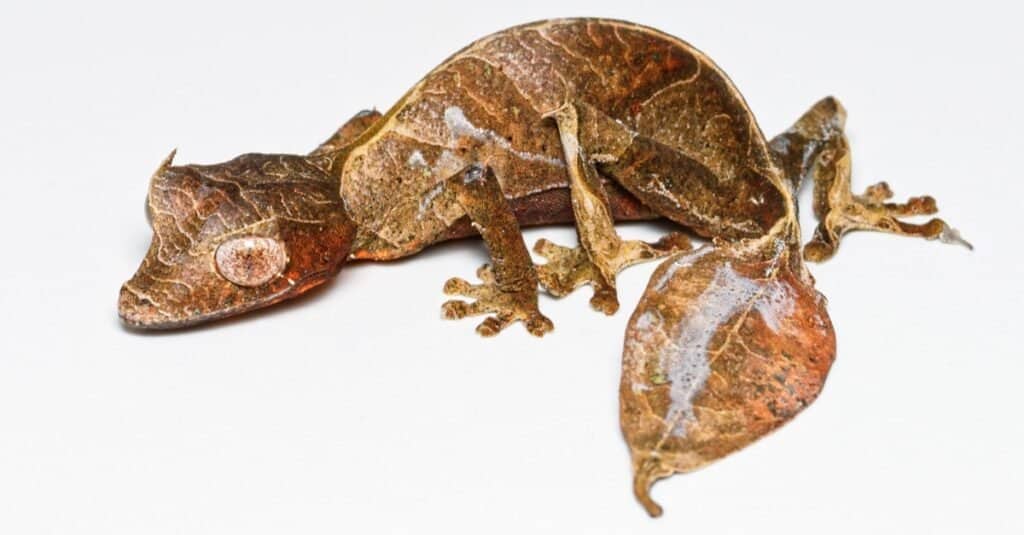
The
Satanic leaf-tailed gecko
is able to cleverly camouflage itself amongst leaf litter.
©Valt Ahyppo/Shutterstock.com
Geckos are perhaps some of the cutest and most vibrant lizards within all five groups. Most species are small, fast, and skilled at climbing. They are most commonly found in warm, humid, densely forested areas near the equator, though a wide range of species lives all over the world!
Here are three awesome types of lizards from this group that you should know:
- The leopard gecko (Eublepharis macularius). This small, spotted lizard is possibly the most popular lizard in the pet trade aside from the bearded dragon! They are also unique for their functioning eyelids and claws rather than sticky pads on their feet.
- Tokay gecko (Gekko gecko). These visually stunning blue and orange geckos are beautiful yet notoriously aggressive. They are native to parts of Asia and a few islands in the Pacific Ocean. Be sure to observe these feisty lizards from a safe distance if you’re lucky enough to find one in the wild!
- Satanic leaf-tailed gecko (Uroplatus phantasticus). This lizard truly lives up to its menacing name! Native to Madagascar, these spooky, wide-eyed geckos have ideal camouflage with their tails that resemble dead leaves.
Iguania: Iguanas, Chameleons, Dragon Lizards

Green iguanas are some of the most well-known iguanid lizards.
©iStock.com/passion4nature
Iguania is another diverse group that includes all manner of iguanas, chameleons, agamid lizards, and anoles. Most iguanid lizards prefer warm, humid, equatorial climates, but many have migrated either on their own or with the help of humans to places like the Americas and Europe.
It’s a bit tough to narrow this group down to only three notable species, but here are the most interesting types of iguanid lizards we think you should know about:
- Green iguana (Iguana iguana). Originally native to parts of Central and South America as well as a few Caribbean islands, it seems the massive, hardy green iguana is now here to stay in Florida and Texas. It’s a shame these lizards are so invasive and destructive, as they make great pets and are incredibly intelligent and curious.
- Plumed basilisk (Basiliscus plumifrons). Also known simply as the green basilisk, this lizard has a handsome casque, or veil, atop its head. It is also visually striking because of its vibrant green color and tall crest that extends down its back and tail. This gives it a distinctly dinosaur-like appearance!
- Nosy Hara leaf chameleon (Brookesia micra). As one of the smallest reptiles in the world, the Nosy Hara leaf chameleon rarely reaches much more than an inch in length. Many photos of the chameleon display it sitting comfortably atop the head of a match or a pen cap! Likely in part due to its minuscule size, this chameleon went undiscovered until 2012.
Lacertoidea: “True” Lizards, Tegus, Worm Lizards, Etc.
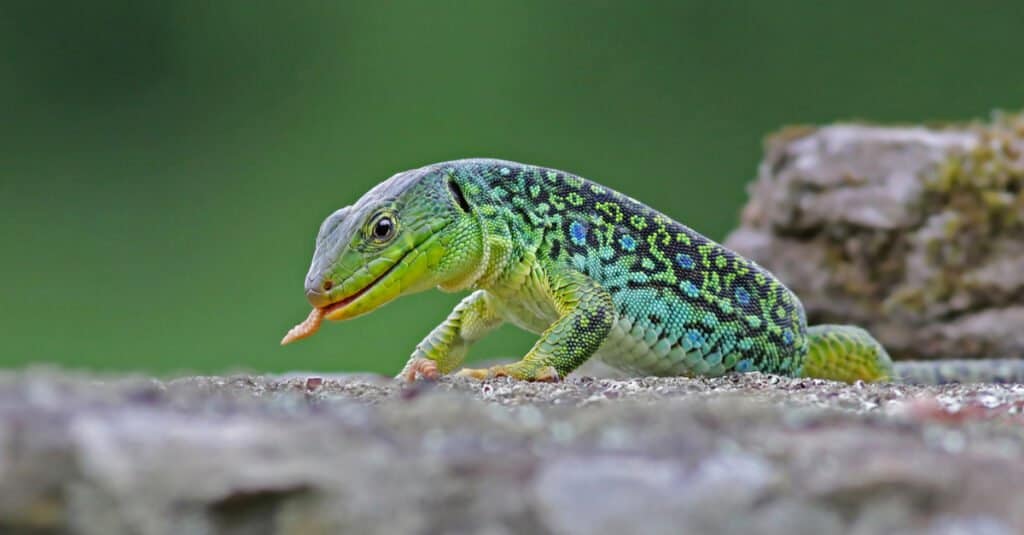
The jeweled lizard’s name suits its beautifully bedazzled scales perfectly.
©Fercast/Shutterstock.com
Up next, we have the fourth main group of lizards, the Lacertoideans! Most notably, this infraorder contains wall lizards, tegus, whiptails, and worm lizards, among many others. Originally, researchers grouped these lizards in with skinks, but they’ve since placed the Lacertoideans into their own distinct group.
Here are three types of lizards within the Lacertoidea group you should know about:
- Jeweled/Ocellated lizard (Timon lepidus). These vibrant green and blue-spotted lizards are native to the Iberian peninsula, more specifically Spain and Portugal. Their beautiful scale patterning makes them popular in the pet trade.
- Argentine black and white tegu (Salvator merianae). The largest of all tegu lizards, the Argentine black and white tegu is also very popular in the pet trade. These large, highly intelligent, famously “dog-like” lizards are primarily native to warm, humid rainforests throughout South and Central America.
- Mexican mole lizard (Bipes biporus). This highly unusual lizard looks more like an oversized earthworm with tiny legs than a reptile! Native to southern California and Northern Mexico, this lizard is shy, reclusive, and is an exceptional burrower.
Scincomorpha: Skinks

The armadillo-girdled lizard has a bizarre defensive pose where it curls up and bites the end of its own tail.
©iStock.com/reptiles4all
Finally, we come to our fifth and final main group of lizards, Scincomorpha. This group, as you may have guessed by now, mostly consists of skinks and a few related families, such as plated, night, and girdled lizards. These lizards are usually small-to-medium-sized with triangular heads, small, weak legs, and wide, robust bodies.
Here are three fascinating types of lizards within this group you should know:
- Northern blue-tongued skink (Tiliqua scincoides intermedia). These lizards are highly popular as pets for their neon blue tongues, cute facial expressions, and docile temperaments. While we find these skinks’ vibrant tongues adorable, they actually use them to scare off predators in the wild!
- American five-lined skink (Plestiodon fasciatus). If you live in the eastern United States, you’ve almost definitely seen the bright blue tail of a baby five-lined skink! Though they have brightly-colored tails as juveniles, they shift to a more subdued brown or tan color in adulthood. These lizards are a delight to observe and thrive in temperate forests near lakes and rivers.
- Armadillo girdled lizard (Ouroborus cataphractus). This spiky, dragon-like lizard’s scientific name references the species’ resemblance to the ouroboros (mythical serpent eating its own tail) when it strikes a defensive pose by curling up and biting the end of its own tail. They are native to the deserts along South Africa’s coasts.
What Kind of Lizard is the Green Anole?
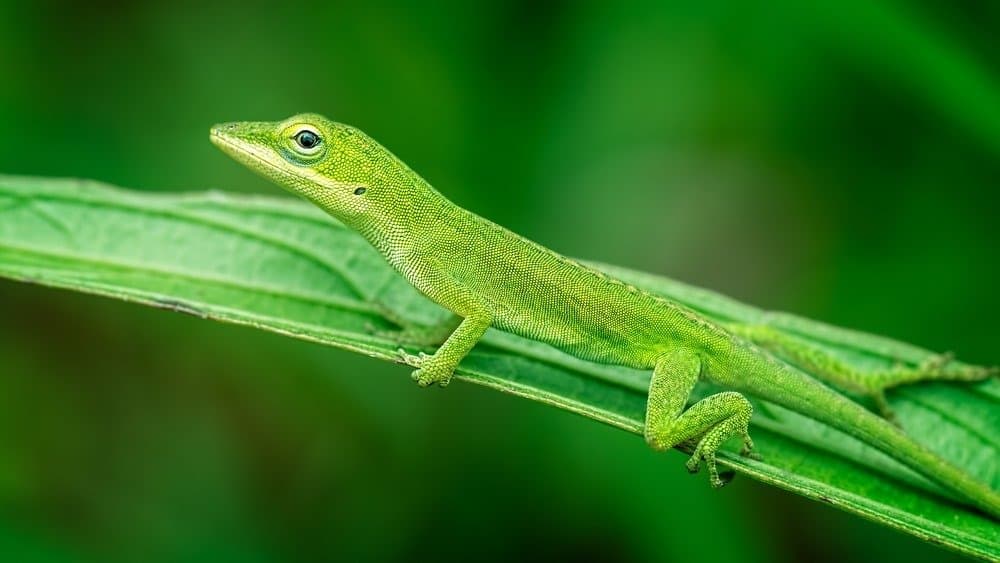
Green anole lizards can be seen in most yards in the U.S.
©Brad Boland/Shutterstock.com
The charming little green anole, which is one of the most common backyard lizards, belongs to the Iguana infraorder. This little lizard is the only species native to the United States and is often mistaken for a gecko or for a chameleon because it changes color. They live on trees and plants and can often be seen clinging to walls and running along deck rails or basking in the sun. Green anoles also love to hunt for insects in flower beds.
Summary of the Different Types of Lizards
To wrap it up, here’s a recap of the 15 different types of lizards we explored.
| Lizard | Scientific Name | Type | |
|---|---|---|---|
| 1 | Slow worm | Anguis fragilis | Anguimorphs (Legless Lizards, Varanids, and More) |
| 2 | Komodo dragon | Varanus komodoensis | Anguimorphs (Legless Lizards, Varanids, and More) |
| 3 | Gila monster | Heloderma suspectum | Anguimorphs (Legless Lizards, Varanids, and More) |
| 4 | The leopard gecko | Eublepharis macularius | Gekkota (Geckos) |
| 5 | Tokay gecko | Gekko gecko | Gekkota (Geckos) |
| 6 | Satanic leaf-tailed gecko | Uroplatus phantasticus | Gekkota (Geckos) |
| 7 | Green iguana | Iguana iguana | Iguania (Iguanas, Chameleons, Dragon Lizards) |
| 8 | Plumed basilisk | Basiliscus plumifrons | Iguania (Iguanas, Chameleons, Dragon Lizards) |
| 9 | Nosy Hara leaf chameleon | Brookesia micra | Iguania (Iguanas, Chameleons, Dragon Lizards) |
| 10 | Jeweled/Ocellated lizard | Timon lepidus | Lacertoidea (“True” Lizards, Tegus, Worm Lizards, Etc.) |
| 11 | Argentine black and white tegu | Salvator merianae | Lacertoidea (“True” Lizards, Tegus, Worm Lizards, Etc.) |
| 12 | Mexican mole lizard | Bipes biporus | Lacertoidea (“True” Lizards, Tegus, Worm Lizards, Etc.) |
| 13 | Northern blue-tongued skink | Tiliqua scincoides intermedia | Scincomorpha (Skinks) |
| 14 | American five-lined skink | Plestiodon fasciatus | Scincomorpha (Skinks) |
| 15 | Armadillo girdled lizard | Ouroborus cataphractu | Scincomorpha (Skinks) |
What Lizard is the Most Dangerous in the World?

The toxic Komodo dragon is considered the most dangerous lizard on Earth.
©USO/ via Getty Images
The most dangerous lizard in the world is the Komodo dragon. This giant carnivorous predator’s saliva contains deadly bacteria which causes sepsis in its victim, so even if it doesn’t kill the animal right away, its toxic bite will seal its fate. This reptile will actually stalk the injured prey until it finally succumbs. The Komodo dragon is able to successfully prey on large animals like goats, pigs, deer, horses, and water buffalo. Young Komodos will feed on birds, lizards, and snakes.
There are documented attacks on humans by Komodo dragons, but they are rare. Between 1974 and 2012, a total of 24 attacks were reported, with 5 of them being fatal. Your chances of encountering a Komodo dragon in the wild are slim to none, as they are isolated to the Komodo National Park in Indonesia. The park is spread out across the three larger islands of Komodo, Padar, and Rinca, and 26 smaller ones within the Lesser Sunda Islands.
Different Types of Lizards
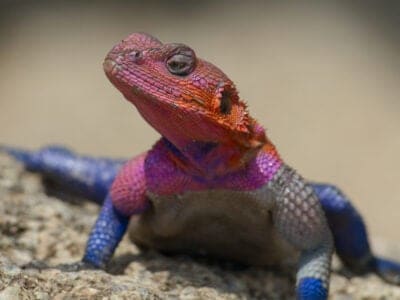
Agama Lizard
The agama forms small social groups that contain both dominant and subordinate males.
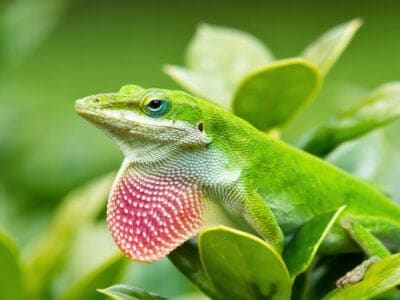
Anole Lizard
There are just under 400 species, several of which change color.

Argentine Black and White Tegu
giant lizard kept as pets
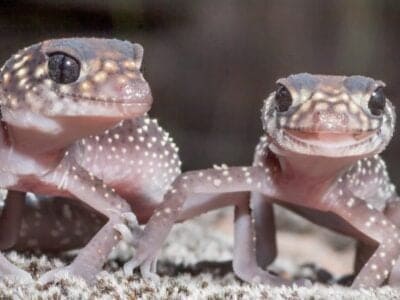
Australian Gecko
Geckos have 100 teeth and continually replace them.
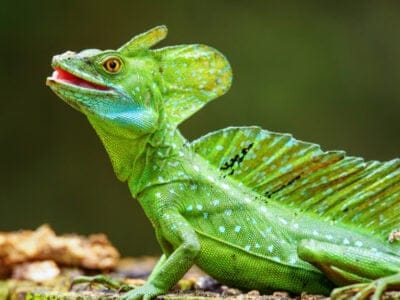
Basilisk Lizard
Can run/walk on water.
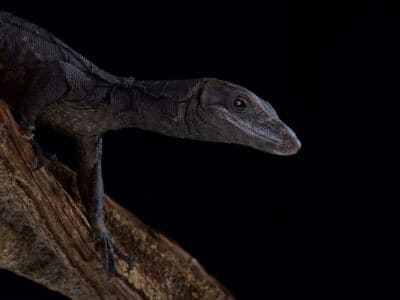
Black Dragon Lizard
Their black color is due to a genetic mutation!
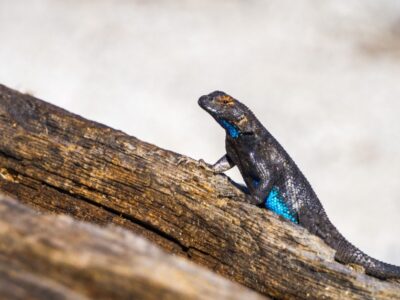
Blue Belly Lizard
This species can detach its tail to escape from predators
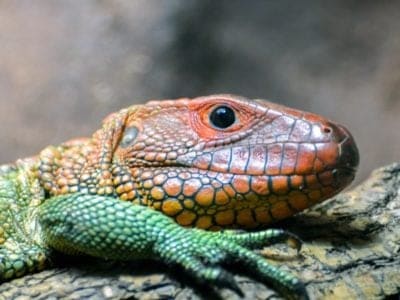
Caiman Lizard
Caiman lizards are among the largest lizards.
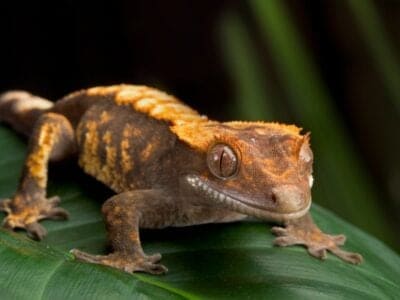
Crested Gecko
The crested gecko can walk on glass and even has a prehensile tail.
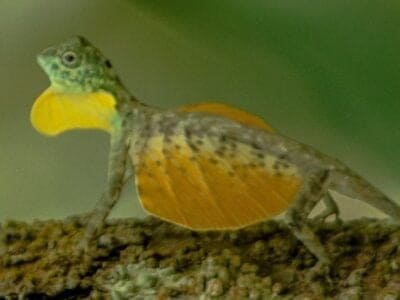
Draco Volans Lizard
Beneath the lizard’s “wings” are a pair of enlarged ribs for support.
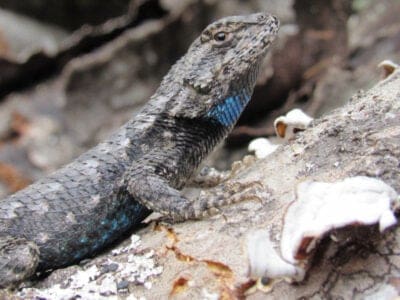
Eastern Fence Lizard
Females are usually larger than males.
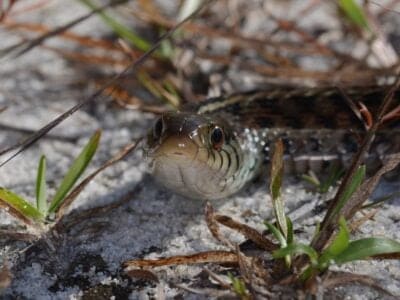
Eastern Glass Lizard
When the glass lizard loses its tail it can grow another one. But the new tail lacks the markings of the old one and is usually shorter.

Gila Monster
This lizard's tail acts as a fat-storage facility!
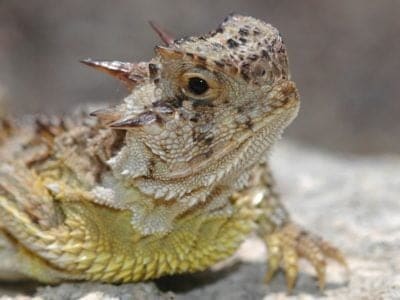
Horned Lizard
The horned lizards are able to squirt blood from their eyes.

Knight Anole
When threatened, the promiscuous knight anole rises on all fours and turns bright green, and gives a menacing look.
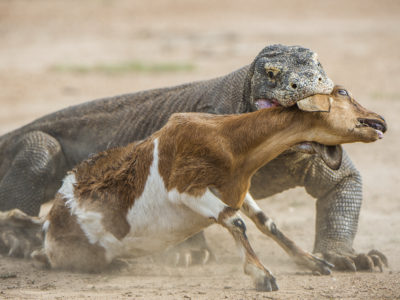
Komodo Dragon
Only found on five Indonesian islands
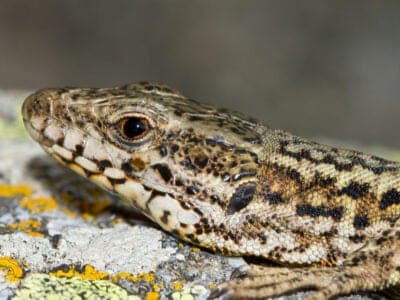
Lazarus Lizard
Lazarus Lizards can communicate through chemical and visual signals.
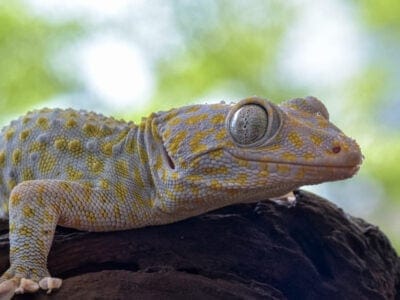
Leopard Lizard
Can jump a distance of two feet to capture prey

Lizard
There are around 5,000 different species!

Marine Iguana
Adult marine iguanas vary in size depending on the size of the island where they live.
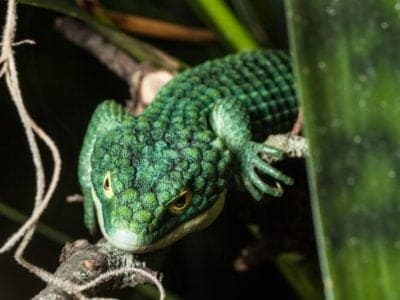
Mexican Alligator Lizard
Mexican alligator lizards shed their skin like snakes.

Mexican Mole Lizard
They can break off part of their tail, but it will not grow back.

Monitor Lizard
Some species are thought to carry a weak venom!

Northern Alligator Lizard
Unlike other lizards, these give livebirth to their young
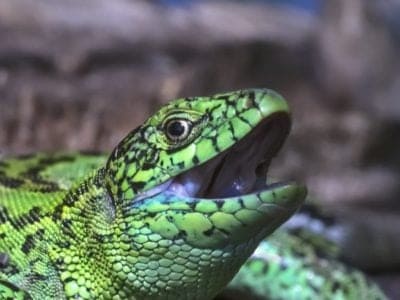
Sand Lizard
Males turn green in spring!

Satanic Leaf-Tailed Gecko
They are called “phants” or “satanics” in the pet trade.

Slow Worm
Found widely throughout British gardens!
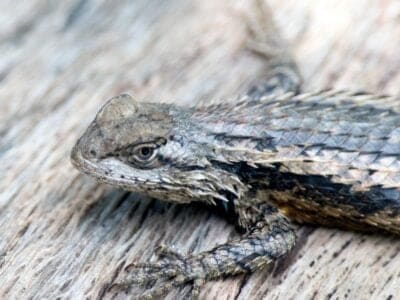
Texas Spiny Lizard
They hold push-up competitions!
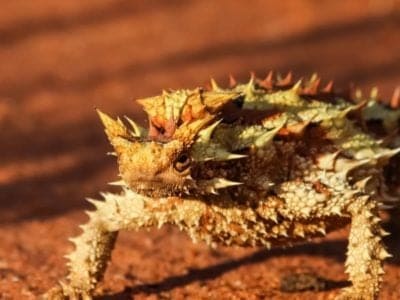
Thorny Devil
Found only on mainland Australia!

Uromastyx (Spiny-Tailed Lizard)
Spiny-tailed lizards "sneeze" out salt!
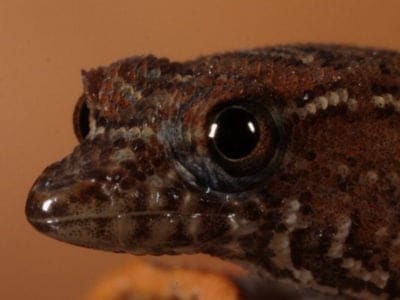
Virgin Islands Dwarf Gecko
The Virgin Islands dwarf gecko is among the smallest reptiles in the world

Whiptail Lizard
Many whiptail species reproduce asexually.
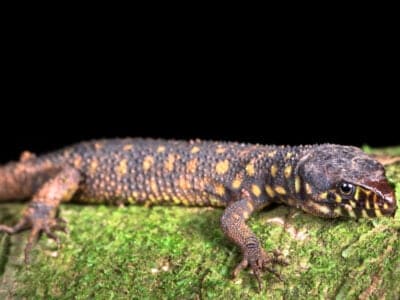
Yellow Spotted Lizard
Gives birth to live young.
The photo featured at the top of this post is © Fercast/Shutterstock.com
Thank you for reading! Have some feedback for us? Contact the AZ Animals editorial team.








